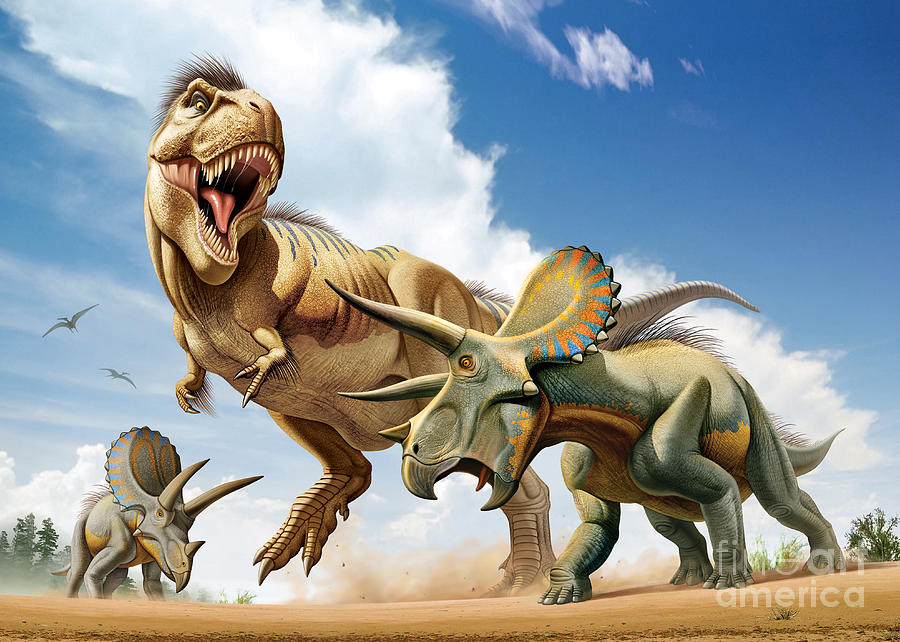Post by Admin on Jan 23, 2015 8:15:48 GMT

Utahraptor
Pronunciation: YOU-tah-RAP-tor
Description: A bipedal carnivore
Order: Saurischia ("lizard-hipped")
Name means: "Thief from Utah"
Period: Early Cretaceous, about 120 MYA
Location: North America
Height: 3 metres (10 feet)
Length: 6.5 metres (21 feet)
Weight: 680 kilograms (1,500 pounds)
Feathers?: Yes
Instincts
+ Defend own/pack offspring to the death.
+ Stay alert near water's edge.
+ Beware of shadows.
+ Out of sight is out of mind.
+Be social! Form packs and bonds!
+ Mate and breed! Raise your offspring!
Verbal Communication
- Snorts - Annoyed
- Shrieks/Screams/Bawls - Extreme Pain, danger, trouble, high aggression, surprise
- Trills/Warbles - Surprise, play
- Growls/Snarls - Aggressive warning
- Many Short Clicks - Uneasy, troubled, cautious
- Hiss - Annoyed, angered, warning
-Purring- Joy, comforted, comforting another
Nonverbal Communication
- Crest raised quickly: Usually only used in arguments or brawls.
- Crest raises and falls repetitively, accompanied by a deep, continuous head bob: Excitement. Shorter, less deep bobs indicate hesitation.
- Crest flattens against the skull, accompanied by a deep bow, with forearms tucked against the chest: Submission, eyes are kept off the dominate one.
- A few short head bobs: A greeting to a pack or family member.
- Muzzle-Rubbing: Sign of affection
Sociability
Utahs are very social animals, and, because of this, they have the tendency to become lonesome. They usually interact well with fellow carnivores, as long as they pose no threat to themselves or their chicks. They commonly travel with family groups or seek out other clans. Due to their social nature, they will create packs, ranging from three to seven or more members to help increase their chances of surviving. The hierarchy follows a structured format, generally with a mated pair as leaders, betas, then the regulars and an omega (Like wolf packs). Packs are very cooperative and work to keep every member healthy.
Diet
Raptors do not totally care for pride when it comes to kills. Alone, Utahs will scavenge for food, but still try to hunt and kill fresh. With others, they will hunt larger herbivores, such as iguanodons, and more. The bigger the number of hunters, the bigger the kill. Their curiosity tends to lead them into trying new creatures, no matter how odd.
Breeding
Utahraptors reach sexual maturity around four to six years of age. Males must try their luck in winning a potential female's affections. The females look for the healthiest males, and determines compatibility. Fights can occur between both genders, and is found to be rather common. Females are usually attracted to parasite-free, healthy looking males with vibrant colors. Utahraptors mate for life.
Nesting
Most Utahs will be satisfied with a safe, isolated area for nesting. Eggs will be laid a week after conception, and are cared for by both parents. The eggs will hatch about a month or so after being laid, where the chicks will be blind and helpless. The parents take turns finding food for their young while the other will watch over the chicks. Vision begins to develop after three days from hatching. The most feeble of the chicks will die first, usually due to weak immune systems. The most selfish of the chicks will grow the fastest and be first to leave the nest on hunts. Generally, the small family packs travel together, following herbivore herds. After two to four years, the chicks remain with their family until they leave on own free will, forced out, or are mated of the pack. The parents will remain together after that and raise many more broods to come.
Take-Overs
Sometimes the Alpha pair might find themselves challenged by rivals; when this happens a fight will occur. Unless the current rulers are scared off for whatever reason. The victor claims the new territory and possibly the pack. Depending upon the situation, the pack may revolt against the new rulers.
Take-Overs are risky and dangerous.
Extra: Dromaesauridae Family

